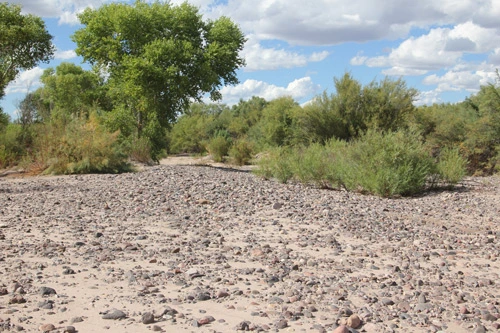Public Policy Review

“Layperson’s Guide” to final rules would be helpful
When I give introductory talks about groundwater management in Arizona, I note that the linchpin to our approach to reducing groundwater overdraft in the Active Management Areas is the Assured Water Supply Rules. The AWS Rules are of critical importance in forcing — I choose this word deliberately — new municipal demand to be met with renewable water supplies, either directly or through groundwater replenishment. Certainly, water providers believe they are responsible purveyors of our most precious resource; however, it is not always realistic to expect voluntary actions since significant expenses can result from using renewable water supplies. Investment in water treatment facilities, water storage and recovery facilities, and/or purchase of services from the Central Arizona Groundwater Replenishment District contribute to the high cost of showing that water demand will be met or offset predominantly by renewable water supplies for 100 years.
Like the municipal sector, the industrial and agricultural rightholders have mandatory conservation requirements, established through the Management Plans for each AMA. However, the latter two sectors have no renewable water supply use requirement. In Central Arizona, agriculture’s significant use of CAP water is not in response to law but to special pricing structures that provide economic benefits. Economy also drives industrial rightholders to heavily invest in conservation and reuse technology. In addition, golf courses use reclaimed water in response to ordinances.
The seminal 1980 Groundwater Management Act mandated that a program of assured water supply be adopted. Assured water supply approval processes developed in the 1980s addressed the program’s requirement for a demonstration of a physically available 100-year supply. But it was not until 1995 that the Assured Water Supply rulemaking processes included the renewable supply requirements currently in effect.
The rules are complex, with detailed provisions varying by AMAs. There are designations versus certificates. The AWS Rules do not force all water providers to become “designated.” Designation has the significant, extra requirement that a water provider’s pre-existing municipal demand (not just new demand) switch to use of renewable water supplies. A “certificate” of assured water supply, on the other hand, establishes that a new subdivision will depend on renewable supplies. Pre-1995 demand could continue to rely on mined groundwater.
To establish a 100-year assured water supply the following must be demonstrated: (1) A sufficient quantity of water is physically, legally and continuously available for 100 years to satisfy the water demands of the subdivision or service area; (2) The water source meets water quality standards; (3) The proposed water use is consistent with conservation standards; (4) The proposed water use is consistent with the AMA management goal (safe yield for several AMAs); and (5) The applicant is financially capable of installing the necessary water distribution and treatment facilities.
Revising the AWS Rules is one among many tasks that the Arizona Department of Water Resources is undertaking. Last session, via House Bill 2174, the Legislature authorized the establishment of the Assured and Adequate Water Supply Administration Fund. This is to include fees ADWR collects for processing assured water supply applications and determining adequate water supply — the less rigorous program in force outside AMAs. The fees are to cover the administrative costs of the program. The bill established an advisory committee to assist the Director in identifying statutory or rule changes to make the application process more efficient. The bill provided deadlines for a report to include the Director’s recommendations for change (December 15, 2005) and required the notice of proposed rule making be filed with the Secretary of State no later than January 1, 2006.
According to ADWR Deputy Director Karen Smith, who conducted a seminar at the WRRC in late November, the agency, while attempting to make the rules more efficient, has worked to rethink the process and simplify it for themselves. At that time, draft rules were being finished to meet statutory deadlines. ADWR anticipates approval of the rules in May or June 2006, with new fees effective July 1, 2007.
I followed the first rulemaking very closely. Over the years, I have had to explain — without the assistance of an attorney — how the rules work. The initial adoption experienced a long gestation period. Reader friendly concept papers helped people like me understand the rules.
Rule making is an administrative process, with certain formatting and procedures followed. I know from my various experiences, most recently as a member of the Arizona Medical Board, that the gist of the rulemaking often can get tangled in the legalese style of rulemaking language. When the Director submits the notice of rulemaking, I hope a “layperson’s guide” will be circulated. The rules are arguably the centerpiece of our efforts to achieve safe yield in the safe-yield AMAs.
I am likely not alone in needing help in understanding changes to these very important rules. Such assistance not only provides guidance on the changes but a welcome refresher course for the program as well. It could also help us to understand what might be at issue should portions of the assured water supply program be applied to communities outside AMAs. This is a controversial issue and outside the scope of the rulemaking process. But a better understanding of the rules will help us determine the implications of any and all changes to our framework that ensures Arizona communities will grow on sustainable water supplies.

